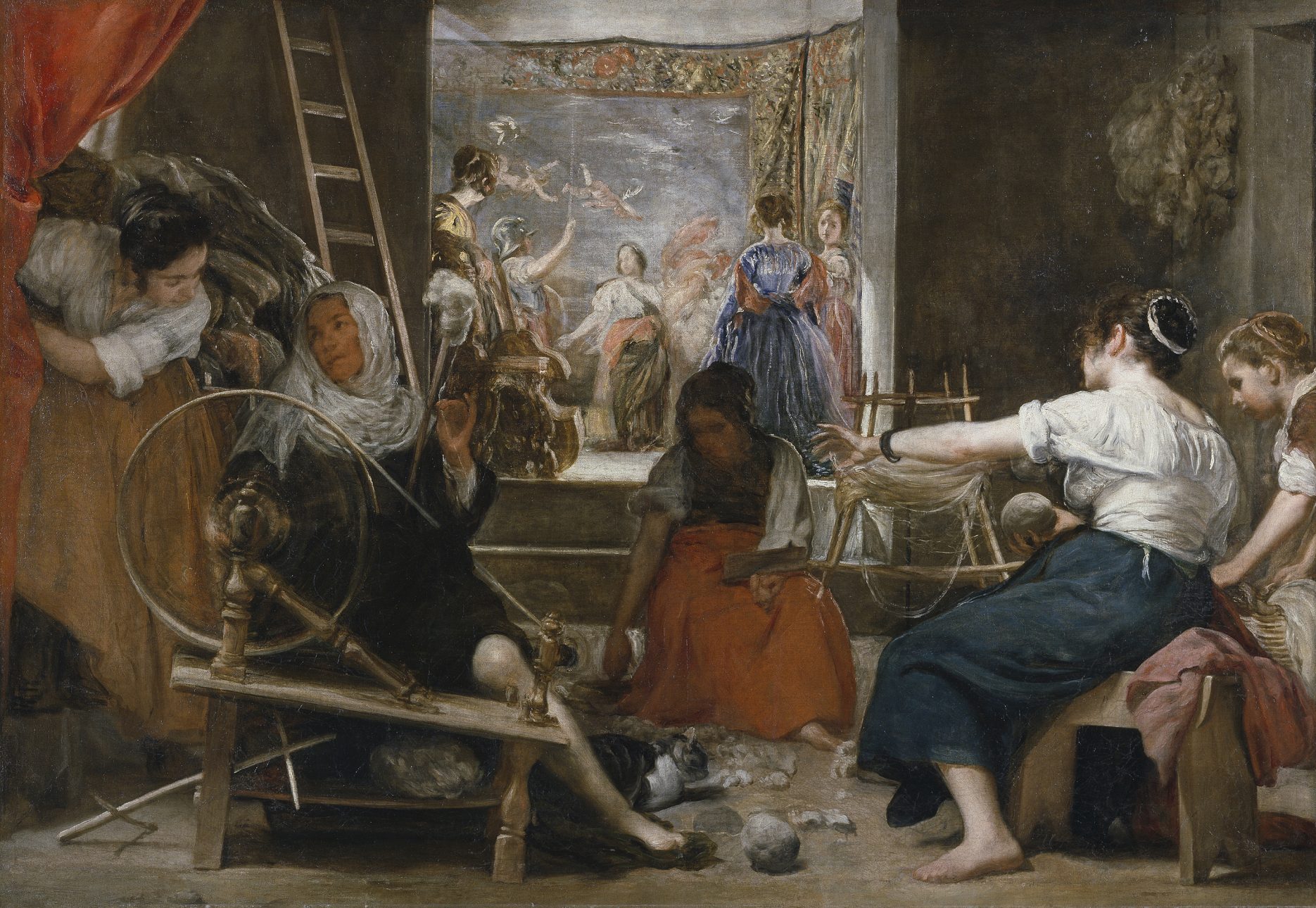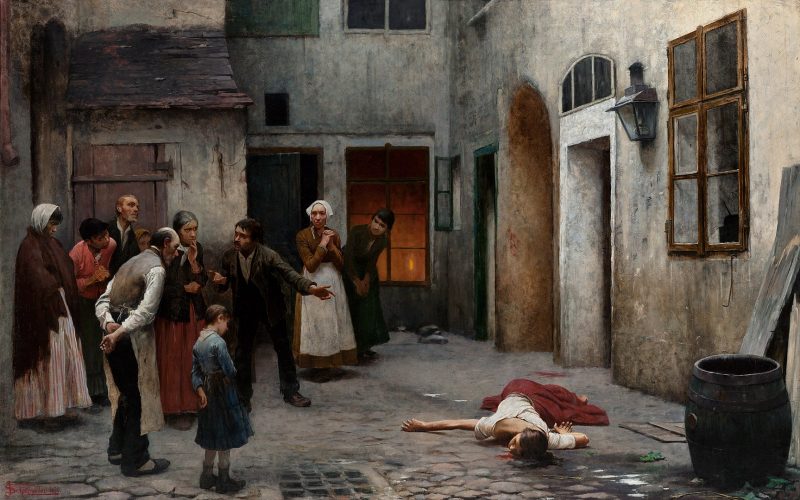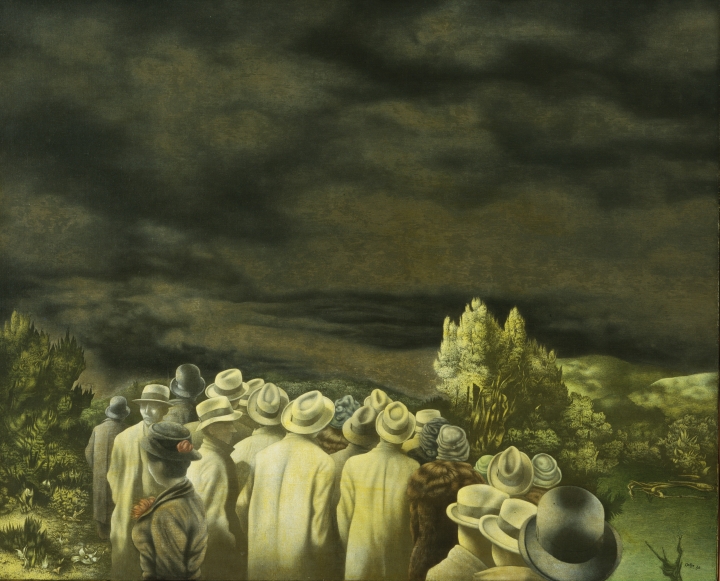According to Ovid, Arachne was a great weaver, but bragged about being a better weaver than Athena. When Athena heard this she challenged Arachne to a weaving contest. Arachne made a more beautiful tapestry about how Zeus seduced and raped mortals, and so the enraged Athena destroyed the weaving and killed Arachne, then reanimated her and turned her into a spider to hang and spin thread for eternity. The myth is a warning against hubris.
Velázquez gives us two women spinning in the foreground; the older on the left represents Athena, while the younger on the right (with her back to us viewers) represents Arachne. Three servants assist the rivals in their contest. In the background we see people in the spinner’s shop but they are Athena and Arachne, at the precise moment when Athena exacts punishment on Arachne. Behind them hangs Arachne’s tapestry, which is actually a copy of Titian’s Rape of Europa; what a nod to Titian!




